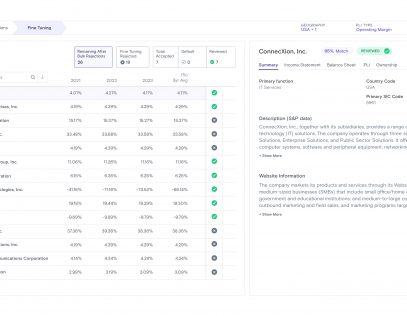For a lot of people—certainly those from my generation—the word “control” brings back memories of Janet Jackson’s 1986 hit album, “Control.” Produced by the legendary Jimmy Jam and Terry Lewis, the album is about how Janet took control of her life and career.
“It is all about control and I’ve got lots of it…”
While I’m sure Jackson wasn’t singing about transfer pricing, believe it or not, the lyrics do speak to in-house tax professionals as their number one objective is (or should be) to take complete control over the tax function. CFOs will expect (demand, really) that tax managers are in control of all processes, functions, risks, and of course, they must adhere to compliance rules and regulations in all countries where they have operations. Only when you are in control of all aspects of the tax function can you effectively manage and forecast the effective tax rate of a company and start thinking about ways to optimize it. Transfer pricing is an integrated part of that.
In this day and age, managing a company’s overall transfer pricing position is a complicated endeavor. Initiated by the OECD’s BEPS program, in particular Action Plan 13, countries have significantly increased compliance requirements, and most MNEs must prepare (and annually update) master and local files. Documentation must demonstrate that companies’ intercompany transactions meet the arm’s length standard, as defined by the respective country’s local rules and regulations.
Master and local file preparation are, of course, the last step in the overall process, and to take control of compliance, tax executives must ask themselves certain questions: Is the company’s transfer policy aligned with business operations and a true reflection of the functions performed, risks assumed, and assets utilized by the entities involved in a given transaction? Are you in control of tracking any changes in the business and what is the process of doing so? Are all intercompany transactions covered by accurate and up-to-date intercompany agreements? Are you in control of accurately reporting any uncertain tax positions related to the company’s intercompany transactions? Just to name a few.
Life isn’t getting easier for in-house tax professionals as an increasing number of countries are adding additional details or requirements that they want to see in documentation and requesting more localized benchmarks, instead of regional benchmarks, which were acceptable in the past. So, how do you stay in control in tracking all requirements in the countries where the company operates and at the same time also ensure an overall consistency in the company’s transfer pricing policy and documentation?
Technology. More and more, technology is becoming an important tool to manage the tax/transfer pricing function and control compliance. Technology ensures your documentation is consistent, tracks local rules and regulations, and makes benchmarking much more efficient. Incidentally, producing consistent and localized documentation is a great way to take control of the transfer pricing function and reduce your risk of audits and adjustments.
Now that may not be what Janet Jackson had in mind when “Control” debuted all those years ago, but given today’s complicated landscape, I can’t help but think she was on to something.









